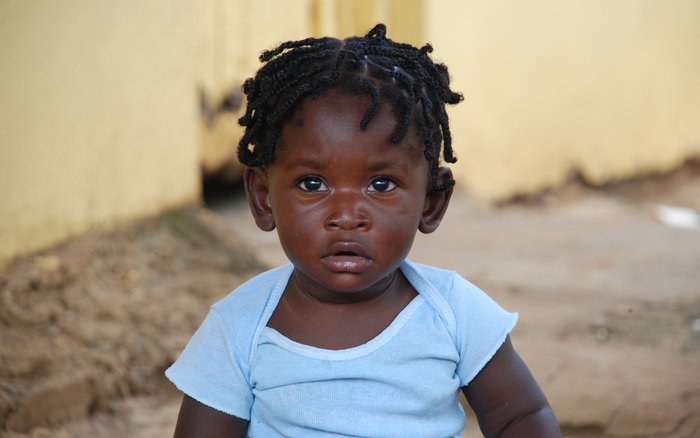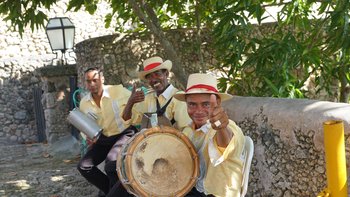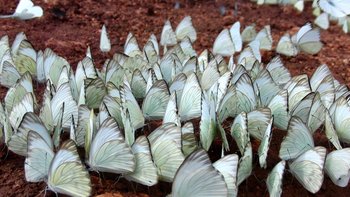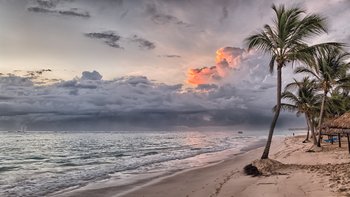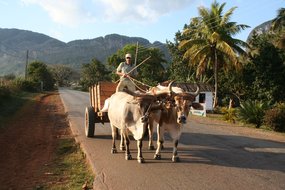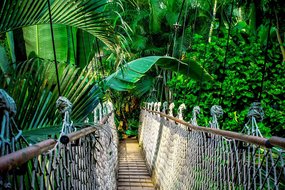Wonderful trips to Dominican Republic - INTI Tours
Famous Paradise
Under the Dominican Republic probably everyone imagines a super beach lined with palm trees in front of the associated hotel resort, which leaves nothing to be desired. So: All inclusive with all water sports, merengue music and cool drinks. Or not?
The Dominican Republic actually offers all this for those who are looking for just that. But the largest of all Caribbean countries has much more to offer. Almost a third of the country's territory is a nature reserve, huge forests invite hikers and nature lovers, and the highest mountain in the entire Caribbean rises over 3,000 meters above sea level. The kaleidoscope of the "DOMREP" is therefore far more multifaceted than imagined at first glance and also offers individual travelers far away from the vacation strongholds a wide range of diverse possibilities. When traveling to the Dominican Republic, you will experience dreamlike beaches and fabulously clear sea water, as well as mountains, forests, caves and waterfalls.
Also in our segment "Honeymoon" we have offers in the Dominican Republic...
Bienvenidos a la República Dominicana!
Country information Absolutely worth seeing Facts and figures Travel in the Dominican Republic Addresses
Our types of travel in the Dominican Republic
You may also like this…
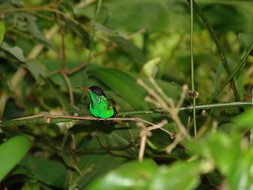
Jamaica Highlights
Highlights of a dream island: in the heart of the Caribbean, Jamaica offers more than just a dreamy beach vacation. The island captivates with fascinating landscapes, extensive coastal plains, interesting cities and an exciting history.
15 days Gruppenreise 2 up to 15 travellers
upon request
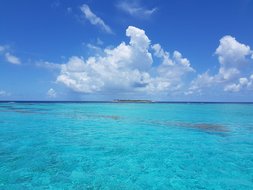
Caribbean Round Trip: Tobago, Trinidad, St. Lucia and Bequia
Caribbean round trip: Lonely snow-white sandy beaches, crystal clear sea, tropical rainforest, colorful coral reefs, picturesque villages, reggae music, exotic cocktails... Experience the most beautiful, largely undiscovered places of the Caribbean away from mass tourism!
15 days Gruppenreise 4 up to 12 travellers
upon request
Country information about Dominican Republic: "The Green Island
The country of Dominican Republic is located east of Haiti on the island of Hispaniola and is thus part of the Greater Antilles. It is the largest country in the Caribbean and has a good 1,600 kilometers of coastline with fabulously beautiful beaches. The green island is surrounded by the Atlantic Ocean in the north and the Caribbean Sea in the south. A good 30% of the country's surface belongs to various nature reserves. The name of the state is derived from the capital Santo Domingo, which in turn was named after the founder of the Dominican Order, St. Dominic. The Dominican Republic is predominantly mountainous. Relatively flat are only the east and the wide longitudinal valley Valle Del Cibao in the north.
Capital Santo Domingo
The city is officially called Santo Domingo de Guzmán and is located on the south coast of the island at the mouth of the Río Ozama. Here is also the most important port of the country. With a population of around 3 million, Santo Domingo is the country's largest metropolis and also the largest city in the West Indies in the Caribbean. Santo Domingo had been settled by Europeans since 1496, but was officially founded by Christopher Columbus' brother Bartolomeo in 1498, making it the oldest city built by Europeans in the New World. It was first called La Nueva Isabela. In 1502, due to a hurricane and a plague of ants, it was refounded on the west bank of the Ozama River by the island's then governor, Nicolás de Ovando, and given its present name. Santo Domingo was deliberately designed as a Spanish ideal city, i.e. with a central square and streets arranged at right angles around it. This urban structure became the template for all cities founded by the Spanish throughout Latin America. In the Spanish colonial empire, Santo Domingo was the seat of the colonial administration and the royal court. In 1538, the oldest university in the Americas was opened here. In 1990, UNESCO declared Santo Domingo's historic center a World Heritage Site of Humanity.
Absolutely worth seeing:
- A visit to the historic old town of Santo Domingo is a must! Old and new offer a surprising variety. A walk through the Alcázar de Colón takes you back to the era of the first Spanish conquerors. The pedestrian street known as Atarazanas was the first trade route in the Americas. The Catedral Metropolitana Santa María de la Encarnación is the oldest cathedral in the Americas. The Museo de las Casas Reales used to be the government palace. Calle Las Damas is the oldest paved street in the New World. From vantage points you can enjoy scenic panoramic views of the famous colonial street and residential neighborhoods, Avenida Malecón and the gigantic Faro de Colón.
- Walking along the waterfront, you can admire the beauty of the Caribbean and modern buildings, such as the Fine Arts Palace, the National Theater and the Presidential Palace.
- Also worth seeing are Los Tres Ojos - underground caves used by the indigenous Taino Indians. They are known as The 3 Eyes National Park.
- There are many special tours and courses in Santo Domingo, such as a chocolate tour, an art tour, or you can take a dance course in Merenge and much more.
- Not far east of the capital is Boca Chica with the magnificent La Caleta Underwater National Park.
The East:
- In the very east of the Dominican Republic is Punta Cana, the vacation destination for couples, athletes and families. Punta Cana has one of the longest and most beautiful white sand beaches in the Caribbean. With an impressive 48 kilometers long and lined with coconut trees, this is the ideal place for those seeking peace and relaxation where the Atlantic Ocean meets the Caribbean Sea. The Punta Cana region stretches from Uvero Alto in the north to Cap Cana in the south. Here there are plenty of all-inclusive resorts and boutique hotels that offer every comfort and are also close to the beach. For families there are amusement and water parks, there are specially designed accommodations for wedding couples who can say yes on secluded beaches. Snow-white beaches and crystal clear waters invite you to sunbathe, swim and fish. Water sports enthusiasts will get their money's worth, there are great snorkeling and diving spots, even ten golf courses are waiting for visitors near the beach.
Absolutely worth seeing:
- If you love vacation feeling with all the trimmings - meaning dream beach, turquoise sea and all the comforts - you are exactly right around Punta Cana. Music events, big sporting events, etc. always provide entertainment.
Northeast of the Dominican Republic:
- If you like it quieter, you should visit the Samaná Peninsula on the northeast coast of the country. Even today, this part of the Dominican Republic is secluded and a true natural paradise. Back then, pirates hid in the lush palm forests of the secluded beaches and in hidden caves, while Europeans and Haitian troops fought in deep waters around the protected bay. Today Samaná is easily accessible by land and air. The capital of the province is Santa Barbara de Samaná. Besides, the largest towns on the peninsula are Las Terrenas, Sanches, Las Galeras and El Limon. This small paradise attracts with untouched beaches, coconut plantations and rainforest. In the hilly and lush green mountains spring rivers with crystal clear water, which flow into the Atlantic Ocean along the rocky coast with bright white and endlessly long sandy beaches. Samaná is the rainiest region in the Dominican Republic. There are beautiful waterfalls, the most famous being the 52 meter high Salto El Limon.
Absolutely worth seeing:
- Los Haitises National Park, a still pristine tropical rainforest bordering the bay with mangrove swamps and hundreds of limestone islands that rise out of the sea like giant mushrooms and are home to pelicans, parrots and frigate birds. The national park covers an area of 1,600 square kilometers. Los Haitises means "mountain landscape" in the Taíno language. Caves contain the largest collection of rock carvings and paintings in the country. Particularly endangered bird species such as Haitian Buzzard, Hopping Woodpecker, Haitian Woodpecker, Hispaniola Emerald Hummingbird can be observed here. The park can be reached by boat from Santa Barbara de Samaná. You can also hike through the rainforest or paddle a kayak through the dense mangrove forests.
- From mid-January to the end of March, more than 1,000 massive humpback whales come to Samaná Bay. Samaná Bay is almost 70 km long and between 8 and 18 km wide. The water in the protected bay is 12 to 20 meters deep and apparently provides the best conditions for the 12-15 meter long whales to mate and raise their young calves. The giant marine mammals come to this area year after year, and whale watching tours can be taken.
- At other times, you can also enjoy the fantastic tropical scenery of Samaná Bay on a boat trip.
- The capital of the province of Santa Barbara de Samaná is a picturesque town with a pretty waterfront promenade and La Churcha, a church built by slaves in the 18th century.
- Las Galeras is an outlying fishing village located on the northeastern tip of the Samaná Peninsula. It is home to beautiful beaches, including the world-famous Playa Rincón. During the day, there are many visitors who leave for boat trips to Playa Rincón, Playa Madama or Playa Frontón. These white sand beaches are located on the Atlantic coast in front of impressive cliffs and are a paradise for snorkelers and divers. From Las Galeras you can go hiking, fishing and snorkeling. The so-called Barco Hundido is considered a hotspot for divers, rich in fish.
- The small picturesque island Cayo Levantado is also known as Bacardi Island, because the rum producer Bacardi shot the famous commercial clip here in 1970. It is located less than 5 km from Samaná Bay. It is known for its brilliant white and palm-fringed sandy beaches. Water cabs depart regularly from the port of Samaná on Avenida Marina to take visitors to this idyllic island.
- The Juana Vicente Ziplines is a course with 20 platforms and 10 ziplines with a total length of 1,750 meters. The course is located in the mountains of Juana Vincente between Santa Bárbara de Samaná and El Limón. Here you can experience the fabulously lush landscapes of the peninsula from a bird's eye view. You soar over hills covered with dense tropical forest. The panoramic view extends to Los Haitises National Park in the distance. You will also see the island of Cayo Levantado shimmering in the Atlantic Ocean.
The North:
- The province of Puerto Plata is the birthplace of tourism in the Dominican Republic and is very well developed. Sea, mountains, lush valleys, rivers and a multitude of beaches form a spectacular and diverse landscape here. Cocoa and coffee trees grow in the fertile soils, and the clearest amber in the world is hidden in the soil. Several resorts along the beautiful coast offer all comforts and a good starting point to the hinterland. It is said that in 1492 Christopher Columbus saw this stretch of coast from his ship with shimmering clouds over Mount Isabel de Torres, bathing the coast in silver light. As a result, Columbus christened the area Puerto Plata - Silver Harbor. He settled in La Isabela in community with the indigenous people and built there the first church and his first house in America. The region offers more than 100 kilometers of beaches along the numerous coastal villages, plus agriculture in the interior, a multitude of rivers and waterfalls, and hotels of all sizes and styles. You'll also find colonial remains in Puerto Plata, including the largest number of preserved 19th-century Victorian-style houses in the Caribbean.
Absolutely worth seeing:
- The city of Puerto Plata, affectionately called La Novia del Atlántico - The Bride of the Atlantic - by locals, continues to amaze visitors with magnificent scenery. The Amber Museum displays the oldest amber fossils found to date in the world, and Fortaleza San Felipe, built in 1577, is the oldest colonial-era fortress in the region.
- The Caribbean's only cable car takes passengers high up Mount Isabel de Torres, with its lush botanical gardens and magnificent views of the Atlantic coast.
- Along the coast of Puerto Plata stretches a paradise for water sports enthusiasts. There are excellent diving sites, for example at Sosúa near Puerto Plata. Cabarete, located near Puerto Plata, is a world-renowned windsurfing, surfing and kitesurfing paradise. Near Playa Dorada you will find a wide variety of water sports, ranging from canyoning in the waterfall park 27 Charcos de Damajagua to snorkeling in Cayo Arena.
- You can also visit cocoa and coffee plantations or take a merengue dance class.
- In the far northwest on the border with Haiti is the province of Montecristi with the national park of the same name. Rice plantations, banana fields and giant cacti line the road here on the way to the seawater salt flats and the steep limestone cliffs where the waves of the Atlantic Ocean break. In this landscape, half Mediterranean and half desert, the dense tunnels of mangrove forests merge into freshwater lagoons. Countless birds live on the small islands off the mainland with their secluded white sand beaches. Fascinating beaches and an enchanting underwater world for snorkeling can be found, for example, on the offshore Cayo Arena and on the Cayos Siete Hermanos. In the underwater national park Montecristi lies a particularly beautiful coral reef. It is the most untouched of the country and accordingly full of life. Here you can find beautiful hard and soft coral gardens at different depths, huge elkhorn corals and schools of small tropical fish. In the marine mammal sanctuary Estero Hondo you can observe nail manatees. Several hiking trails lead to the protected lagoons, where most of the endangered, herbivorous manatees can be found.
The South:
- East of the capital, Santo Domingo, La Romana is a fashionable tourist destination with excellent accommodations, the best cuisine popular golf courses on the Caribbean coast. West of Santo Domingo lies the so-called "Deep South" around Barahona. Nature reserves and national parks are home to an extraordinary variety of species. In addition, there are idyllic surfing beaches with crashing waves, waterfalls with freshwater pools, bird paradises in the midst of green mountains, and coffee plantations where the finest coffee in the country is grown.
Absolutely worth seeing:
- For those who prefer a more leisurely pace, Bayahíbe and Dominicus offer the charm of well-kept fishing villages.
- Of all the national parks in the country, Cotubanamá National Park has the most caves. Within the national park you will find over 500 different species of plants, 300 species of birds, and long white sand beaches on the islands of Saona and Catalina. From Bayahíbe you can explore the region on foot. Along colorful coral reefs there are several diving sites and steep cliffs with an impressive variety of marine life. The park has magnificent beaches, especially on the island of Saona. Here are some of the most important nesting sites for sea turtles in the Dominican Republic.
- Sierra de Bahoruco National Park is part of the country's only UNESCO Biosphere Reserve. Signposted trails allow hikers to enjoy the diverse nature with over 180 species of orchids, rhinoceros iguanas and over 100 species of birds. Rivers rush through the wilderness and flow into the sea at pebble beaches below rugged cliffs.
- Lago Enriquillo is the largest and deepest lake in the Caribbean and lies below sea level. On boat trips across the lake and to Isla Cabritos you can see pointed crocodiles and flamingos.
- The province of Pedernales can be considered an insider tip. Huge cacti line the streets and between them you can catch a glimpse of the turquoise coast. In the Jaragua National Park, Bahía de las Àguilas is considered the most beautiful beach in the entire Dominican Republic. Crystal clear, turquoise waters are framed by karstic rock formations.
The interior:
- The interior of the island nation is mountainous with many waterfalls, rivers, forests and pleasant mild temperatures. Here is also the Pico Duarte with 3.087 M.ü.M. the highest mountain of the country as well as the entire Caribbean.
Absolutely worth seeing:
- Situated at 529 meters above sea level, Jarabacoa is a picturesque resort in the mountains and a popular destination for city dwellers from Santiago and Santo Domingo. One can enjoy cooler temperatures, refreshing rivers and lush green landscapes of dense pine forests and coffee plantations. In the Taíno language, the place name means "place of water." Jarabacoa has become a center of eco-tourism and good starting point for tours in the area. River rafting, tubing, canyoning, rappelling in Salto Baiguate, mountain biking, horseback riding, paragliding and hiking, e.g. to the waterfalls Salto de Jimenoa, are possible.
- Already since 1958/56 there is the double national park Jose del Carmen Ramirez and Armando Bermúdez near Jarabacoa. This natural region can also be reached from Guanito, San Juan de la Maguana, Los Frios or Los Rodriguez. It is a unified area of 1,530 square kilometers, but a provincial border runs through the middle of the reserve. The highest mountains of the country and the entire Caribbean are located there in the Cordillera Central. It is sometimes called the Dominican Alps because of its unusual height for the Caribbean. The park is characterized by the lush vegetation of the temperate high altitude climate and one can enjoy wonderful hiking. Here you can also find extensive rainforests and pine forests, ornithologists enjoy the variety of birds. A special adventure for visitors to the national park is a multi-day hiking and trekking tour to Pico Duarte. There are well-marked trails leading to the summit of the mountain, although it is best to complete the ascent with a guide and porter. One climbs through humid rainforests up to the alpine landscape, where low temperatures prevail even during the day. Especially in winter, the thermometer settles around freezing point. In general, the temperatures in the Jose del Carmen Ramirez National Park are rather cool compared to the sunny and warm coastal sections, ranging from 11 to 18 degrees Celsius, which is important to keep in mind when choosing clothing.
- Constanza, with an altitude of 1,200 meters above sea level, is the highest municipality in the Caribbean and is surrounded by four natural parks, such as the Valle Nuevo National Park or the Èbano Verde Reserve. On hiking trails in cloud, pine and fern forests and on high plateaus, more than 70 species of birds can be discovered, as well as more than 500 different species of plants. The Aguas Blancas waterfall can also be visited; at 83 meters high, it is the highest waterfall in the Caribbean.
- In the interior, Santiago de los Caballeros is a city worth visiting. It was named after the 30 Spanish noblemen who accompanied Columbus on his arrival and settled here in 1495. Initially, this was the most important city in the country before being destroyed by an earthquake in 1562. Today Santiago is the second largest city in the Dominican Republic. Because of its location in the heart of the country in the Cibao Valley, the city is often affectionately referred to as Ciudad Corazón. The modern and cosmopolitan metropolis is a thriving center and has a vibrant cultural life.
- At carnival time, La Vega is well worth a visit. The festivals and parades are famous. Bonau is also famous for its carnival as well as being a city of art.
Facts and figures Dominican Republic:
Land area: 48,730 sq. km.
Population: just under 11 million - of which about 73% are mixed race (mulatto), 16% white and 11% black. The population is mainly descended from early European immigrants, mainly from Spain, and from African slaves. Officially, about half a million people of Haitian origin live in the Dominican Republic, plus illegally about another half million Haitians.
Capital: Santo Domingo with about 3 million inhabitants.
Highest mountain: with 3.098 meters the Pico Duarte
Form of government: Presidential Republic
History: The territory of the Dominican Republic was part of the Spanish crown colony of Santo Domingo. In 1805 the colony was conquered by Haiti. Santo Domingo finally gained independence in 1844. To fend off attempts to reconquer Haiti, the young republic submitted to the Spanish crown again in 1861, but regained statehood by 1865. During the U.S. military intervention in the Dominican Republic from 1916-1924, the United States Marine Corps served as the occupation force. The American occupation was followed by years of democratic governance, dictatorships and military governments.
Economy: The Dominican economy has experienced steady economic growth for years, averaging 5.4% since 1992, the strongest growth in the Caribbean region. Corruption is a major problem in the Dominican Republic. The service sector accounts for 62% of the economy, industry 23%, and agriculture 15%. Agricultural products are sugar, bananas, coffee, cocoa, tobacco, vegetables, rice and coconut. Raw materials are ferronickel, gold, silver, zinc, larimar. There are existing industries in food production for sugar, tobacco and rum. Iron, steel and cement are also mined.
Currency: Dominican peso
Language: Spanish
Festivals: The Dominican Republic, characterized by Catholicism, is rich in festivals and celebrations. The patron saint festivals (fiestas patronales) alone, which honor the respective patron saint of a place, are so numerous that there is a very high probability of being able to witness one of them during your stay.
In La Vega, famous carnival parades take place every Saturday in February, and in Bonau on Sundays. Also in Punta Cana colorful groups from different provinces animate to dance and good mood. In Santo Domingo, the country's largest carnival parade awaits on the last Sunday of the month.
Semana Santa in Holy Week is celebrated with many processions. Easter is the most important festival of the year and is celebrated extensively every year, especially in the coastal regions.
At the end of June the patron saint fiestas are held in Moca and Santiago, and in July the patron saint fiestas are held in Puerto Plata, Isabela.
Jarabacoa is famous for its annual Flower Festival in June, celebrated with horse parades, flower contests and folk dances in the mountain lifestyle.
In late July/August, the Merengue Festival is held in Santo Domingo.
In August is the Caliente Festival in Punta Cana.
The Merengue Festival in Puerto Plata is held in late September.
The patron saint festivals in Boca Chica and Samaná are in October.
On October 12, the discovery of America is celebrated nationwide.
The Puerto Plata Festival in Puerto Plata is in October.
Travel in the Dominican Republic:
Entry requirement: The valid passport must be valid for at least six months at the time of entry. German citizens do not require a visa for a single entry and a stay of up to 30 days. The practice and requirements of individual airlines regarding the documents to be carried by their passengers differ in part from the government regulations. Please check with your airline prior to travel, if necessary.
Vaccinations: No mandatory vaccinations are required for direct entry from Germany. If entering from a yellow fever area, proof of a yellow fever vaccination may be required. Make sure that you and your children are up to date with the standard vaccinations according to the vaccination calendar of the Robert Koch Institute. As travel vaccinations, vaccinations against hepatitis A are recommended, and also against hepatitis B, typhoid and rabies for long-term stays or special exposure.
Climate & travel time: Throughout the year, high summer temperatures prevail in the Dominican Republic. The period from December to April is particularly popular, as the weather is at its best during these months. Outside of this season, it can rain in some regions of the country. During the rainy season, however, it does not rain permanently, but usually only briefly and heavily. Afterwards, the sun shines again, the air is fresh and the vegetation blossoms. However, one must expect higher humidity. From June to November is hurricane season in the Caribbean and therefore also in the Dominican Republic. The highest probability of being hit by a hurricane is from September to October. Nevertheless, tropical cyclones rarely occur on the island. More common are heavy rains, strong winds and thunderstorms.
Local time: CET -5 hrs. CEST -6 hrs.
Addresses:
Embassy of the Dominican Republic
Cicerostraße 21
10709 Berlin
Tel. 030-95 99 85 120
info@embajadadominicana.de
https://www.dr-botschaft.de


